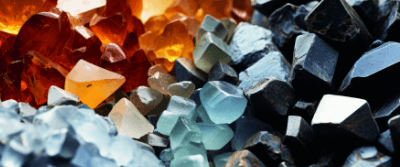Exploring the Periodic Table: Rare Earth Elements

By Iva Fedorka
Rare earth elements (REE) are a group of 17 soft and silver-white metals that are valued for their luminescent and magnetic qualities. In the periodic table, they make up the group called the lanthanoids and include other elements in Group 3.
Despite their name, REEs are not really scarce. Cerium, atomic number 58, is actually more plentiful than copper. However, REEs are not found in concentrated forms like other metals.
Physical and Chemical Characteristics
REEs tarnish slowly in air, ignite spontaneously at 400°C (752°F), and often form oxides with other elements. Their biological function is minimal.
The electron structure of REEs makes them unique—their electrons in 4f orbits give them powerful magnetic properties and the ability to emit light at specific wavelengths.
- High-powered lasers are made using yttrium and neodymium
- Internet signals are boosted by erbium
- Colors on television, computer, and telephone screens come from various REEs
- Headphone sounds, hard drive data storage, magnetic resonance imaging (MRI), and wind turbines depend on magnets containing neodymium
- Electric vehicle batteries are more heat-resistant when dysprosium is added
- Crude oil is transformed using cerium as a catalyst
- Nuclear reactor control relies on the neutron-absorbing ability of gadolinium
- The conductivity of photovoltaic solar cells is enhanced by tellurium alloys
Supply and Availability
To obtain a significant quantity of REEs, a large amount of raw material is needed. The mine sites are often open pits that disrupt ecosystems and produce waste ponds full of toxic acids, heavy metals, and radioactive material. Although REEs have been found on every continent, more than 90 percent of the global supply currently comes from China.
Non-traditional sources of REEs, like mine tailings, geothermal brines, and coal byproducts, may help diversify their supply chain. But methods haven’t been developed to process them economically, which creates both a challenge and an opportunity for discovering new ways to process, reclaim, and recycle these precious materials.
An Alternate Method
Researchers at Lawrence Livermore National Laboratory (LLNL) are using bioengineered bacteria to recover REEs from raw materials. Using bio-adsorption of leachates from metal-mine tailings and rare earth deposits, the team showed better efficiency and selectivity for REEs versus other non-rare earth metals.
“To alleviate supply vulnerability and diversify the global REE supply chain, we’ve developed a new extraction methodology using engineered bacteria that allowed us to tap into low-grade feedstocks,” said Yongqin Jiao, lead author of a paper appearing in Environmental Science & Technology.
The microorganisms provide a large surface area and cell surface functional groups with metal coordination functionality. The cells can also tolerate multiple adsorption-desorption cycles without needing frequent regeneration.
REEs are essential for clean energy industries, a high-tech economy, and even national security, so the search for cost-effective and environmentally friendly methods of producing these elements continues.
“Our results demonstrate the technical and economic feasibility of coupling bioengineering with biosorption for REE extraction,” Jiao said.

